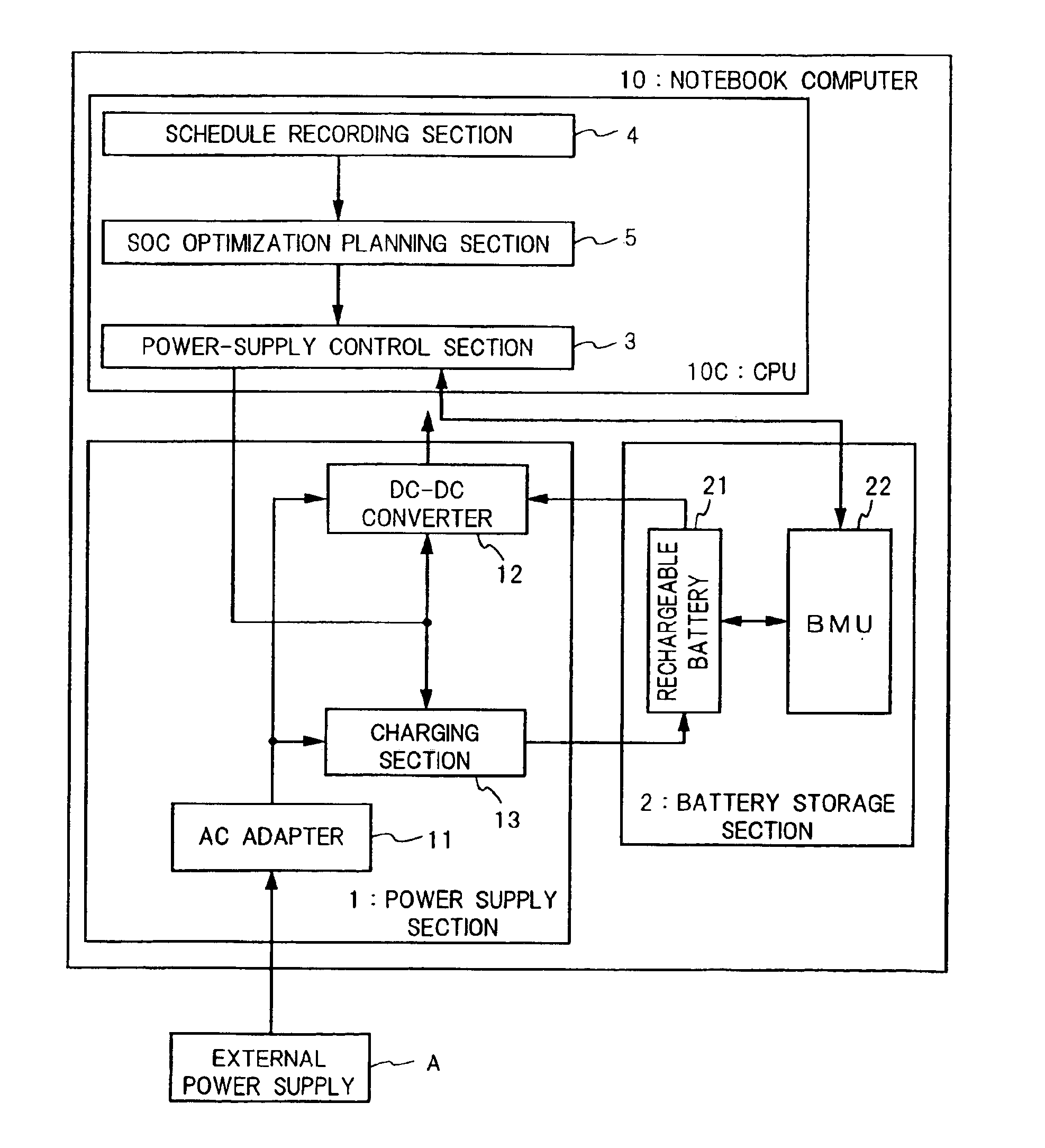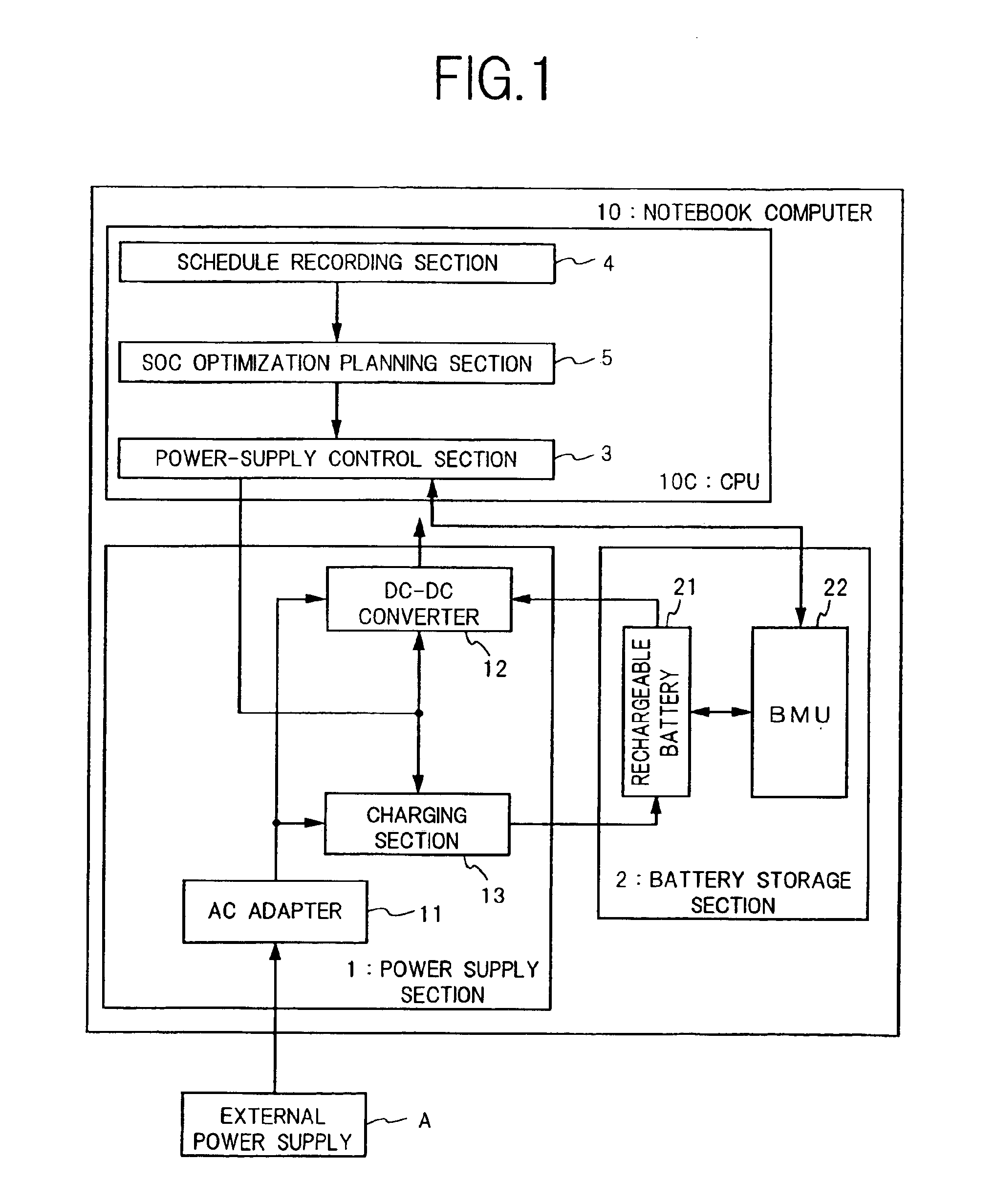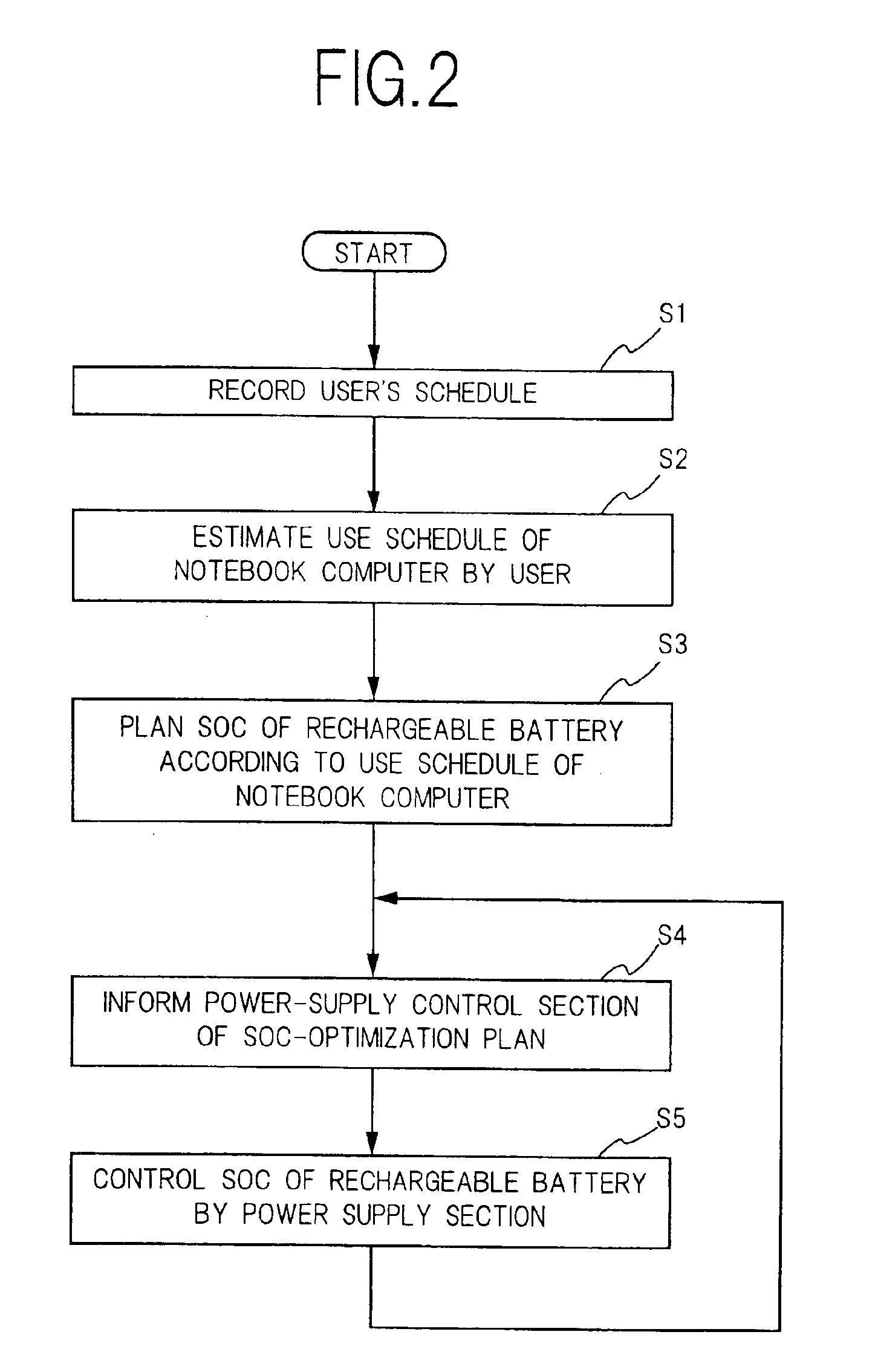Mobile information apparatus, method and program for optimizing the charge state of the apparatus, and battery management server, method and program using the server to optimize the charge state of battery-powered electrical apparatus
a technology for information apparatuses and electrical equipment, applied in secondary cells, digital computer details, instruments, etc., can solve the problems of reducing the upper limit of the battery capacity, affecting the service life of the rechargeable battery, and affecting the use of the battery. , to achieve the effect of reducing the burden on the user, ensuring the long life of the rechargeable battery, and maximising the use of the battery capacity
- Summary
- Abstract
- Description
- Claims
- Application Information
AI Technical Summary
Benefits of technology
Problems solved by technology
Method used
Image
Examples
embodiment 1
[0052]FIG. 1 is the block diagram about the battery management in the notebook computer 10 of the present invention.
[0053]A power supply section 1 converts the electric power from the external power supply A or a rechargeable battery 21 in a battery storage section 2 into a predetermined DC power, and supplies the DC power to each section in the notebook computer 10. The power supply section 1 includes an AC adapter 11, a DC-DC converter 12, and a charging section 13. The AC adapter 11, when connected to the external AC power supply A, converts the AC power provided by the power supply A into a DC power, and sends out the DC power to the DC-DC converter 12 and the charging section 13. The DC-DC converter 12 receives the input of the DC power from the AC adapter 11 or the rechargeable battery 21, and produces the outputs of the predetermined DC voltages to the respective sections of the notebook computer 10. The charging section 13 charges the rechargeable battery 21 with the DC pow...
embodiment 2
[0085]The battery management server 30 is a PC preferably. The server may be particularly a notebook computer or a PDA. A network interface 8 performs data communications with the network 6.
[0086]The CPU (not shown) of the battery management server 30 runs the scheduler recorded by, for example, a HDD (not shown) built in the battery management server 30, and functions as a schedule recording section 4. Here, the scheduler is the application for recording and managing a user's schedule, and may be, for example, a scheduler incorporated into a general PC. The schedule recording section 4 records data on the user's schedule that the user enters through a keyboard or a mouse (not shown), in a nonvolatile memory such as the above-mentioned HDD and a memory card, in a predetermined file format. The schedule recording section 4 may, in addition, import the files about the user's schedule through the network 6 from other mobile information apparatuses on the network 6, for example, the no...
PUM
 Login to View More
Login to View More Abstract
Description
Claims
Application Information
 Login to View More
Login to View More - R&D
- Intellectual Property
- Life Sciences
- Materials
- Tech Scout
- Unparalleled Data Quality
- Higher Quality Content
- 60% Fewer Hallucinations
Browse by: Latest US Patents, China's latest patents, Technical Efficacy Thesaurus, Application Domain, Technology Topic, Popular Technical Reports.
© 2025 PatSnap. All rights reserved.Legal|Privacy policy|Modern Slavery Act Transparency Statement|Sitemap|About US| Contact US: help@patsnap.com



